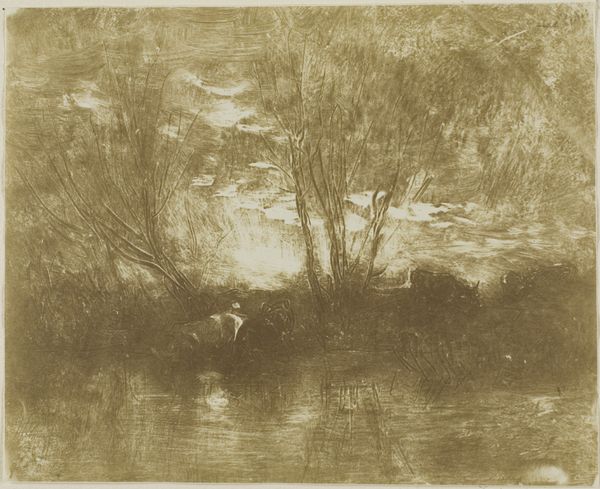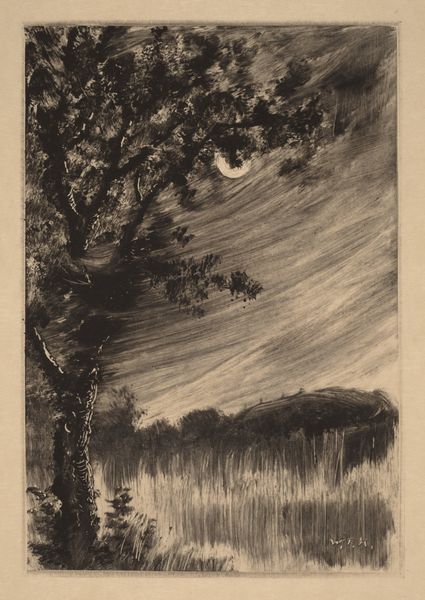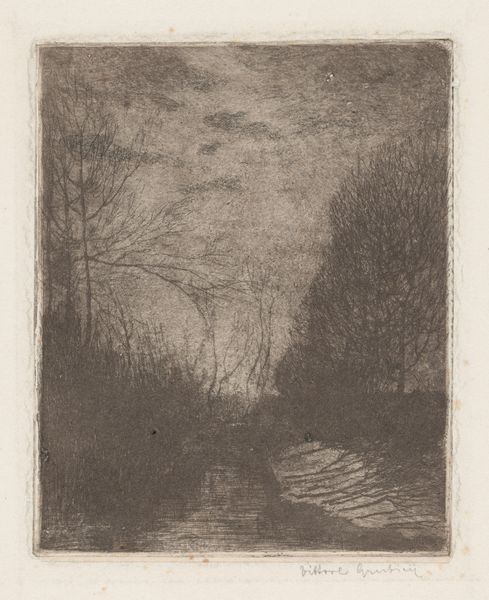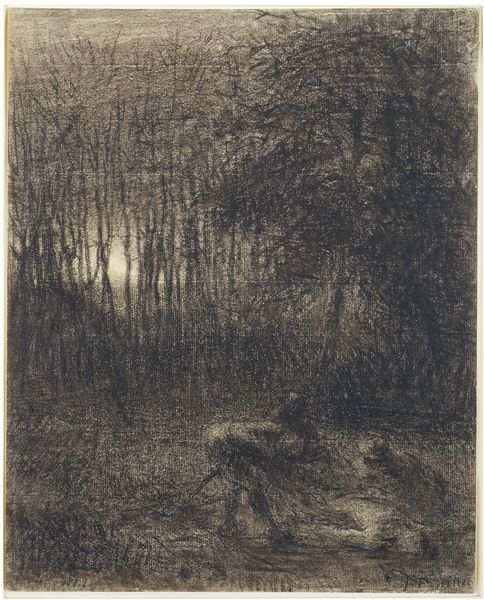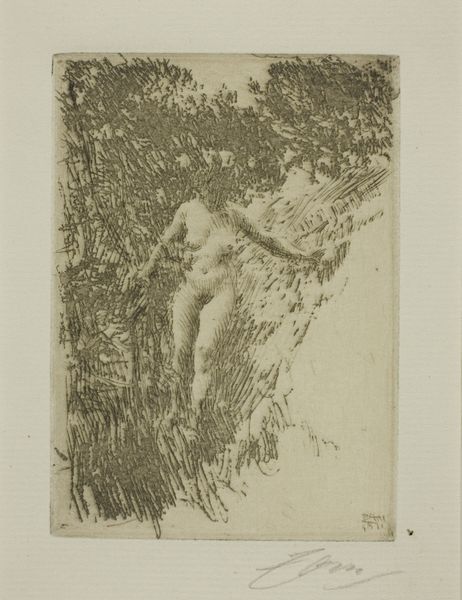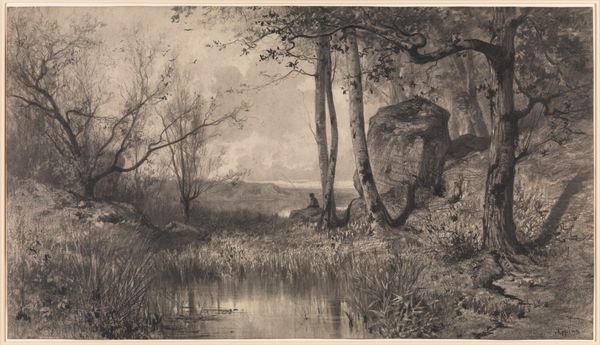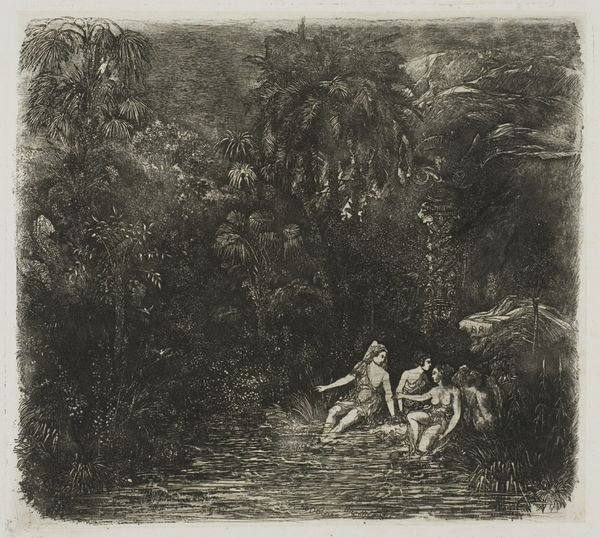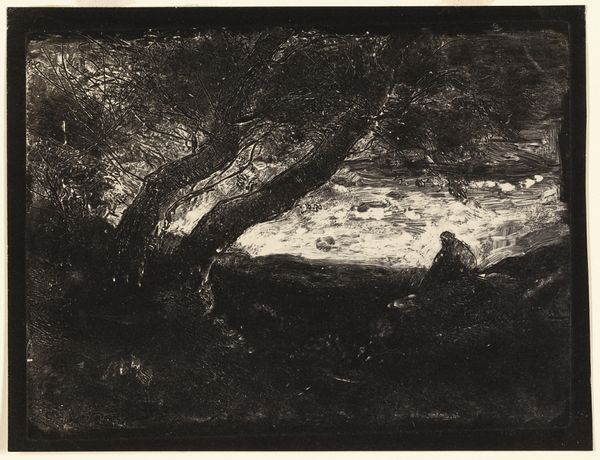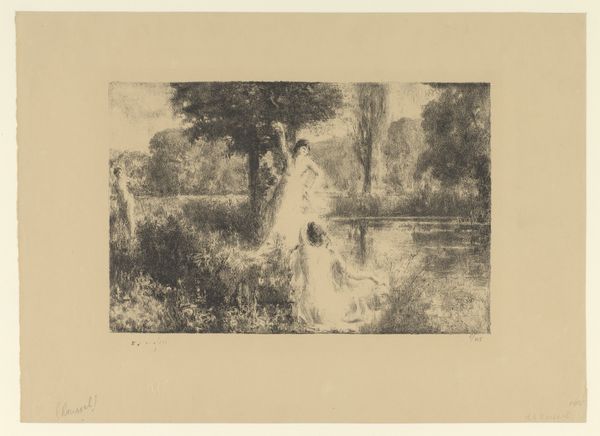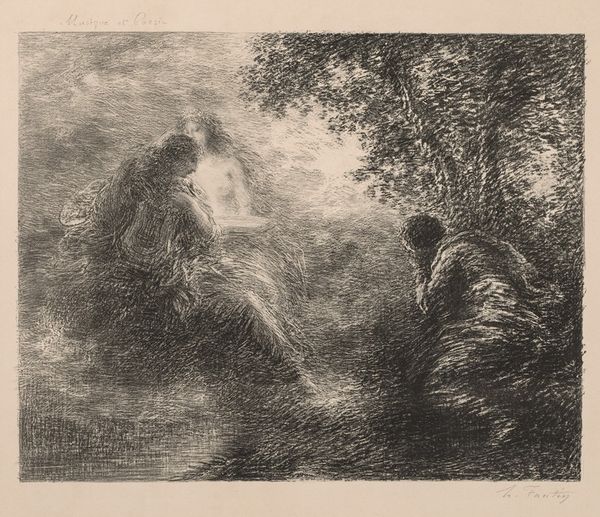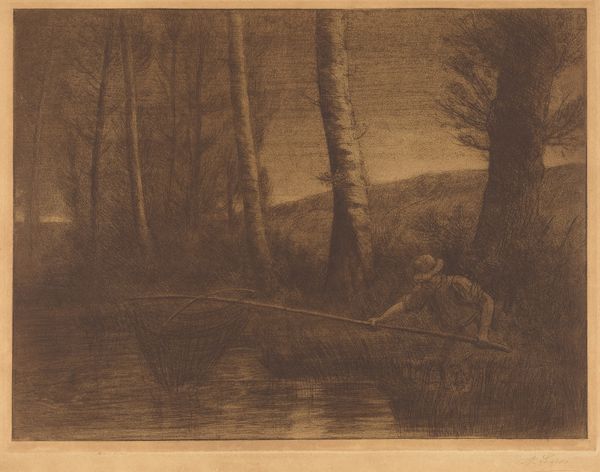
Dimensions: plate: 12.8 x 17.8 cm (5 1/16 x 7 in.) sheet: 15.6 x 20.2 cm (6 1/8 x 7 15/16 in.)
Copyright: National Gallery of Art: CC0 1.0
Curator: Standing before us is "A Bather," a charcoal and pencil print by Camille Pissarro, dating to 1894. It presents a landscape setting, seemingly natural, enveloping the figure. Editor: There's a melancholy mood in the air. The somber charcoal strokes, the secluded figure... it feels less like an idealized nude and more like a candid, almost voyeuristic glimpse into a private moment of vulnerability. Curator: Let’s consider Pissarro’s choices in the selection and application of these media. The printmaking process allows for multiples, essentially democratizing access to the image. Furthermore, his blending of charcoal and pencil showcases a deep interest in mark-making, and demonstrates how accessible tools can still produce artworks which rival paintings produced through laborious, and therefore economically exclusive processes. Editor: Indeed, and the very subject adds to this line of thought. Representations of bathers in art history are often highly stylized and laden with symbolism about purity, leisure, etc. Here, there's none of that. This woman seems very grounded, literally and figuratively. Her body, while unclothed, lacks overt sexualization, rendering her humanity central, rather than simply fetishizing an object of desire. Curator: Right, but think too about the labor that is invisibly imbedded into an image such as this. The labor of sourcing the charcoal, preparing the paper. And the fact that these types of scenes often featured working-class individuals at leisure... There's often the potential to engage these works more critically and expand art historical canons to those subjects outside the norm. Editor: And considering this was made in the late 19th century, when the representation of the female nude was largely confined to academic or mythological settings, this piece feels like a quiet act of resistance. The quotidian as revolutionary, if you will. By placing this anonymous woman, rendered naturalistically, within her landscape, Pissarro subtly challenges the rigid boundaries of class, gender, and representation. Curator: I think by focusing our lens on those working elements, we get a broader understanding not only of Pissarro’s project but also how that project resonates through different audiences throughout history, despite vastly differing views of labor relations, as well as what defines or delineates the “nude” subject. Editor: Absolutely. Ultimately, viewing art through lenses like class, gender and politics encourages a more democratic and relatable understanding of art history itself. Curator: And hopefully the material lens we look through makes that process more legible. Editor: Definitely.
Comments
No comments
Be the first to comment and join the conversation on the ultimate creative platform.
